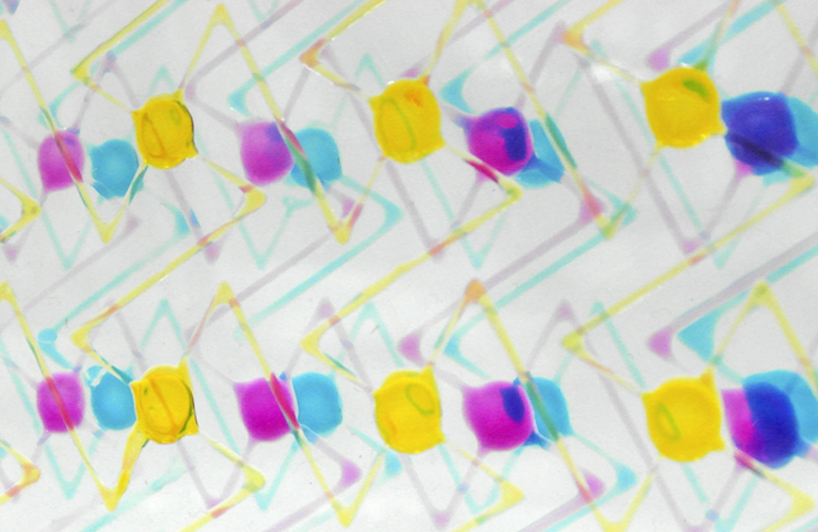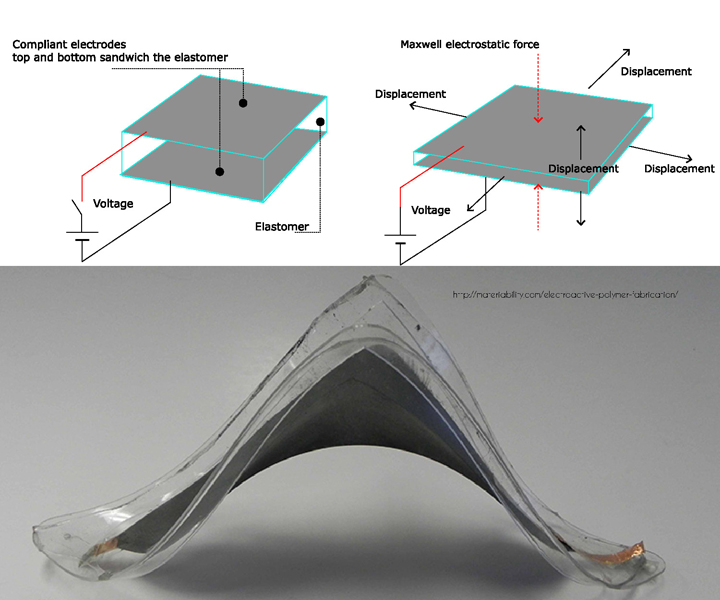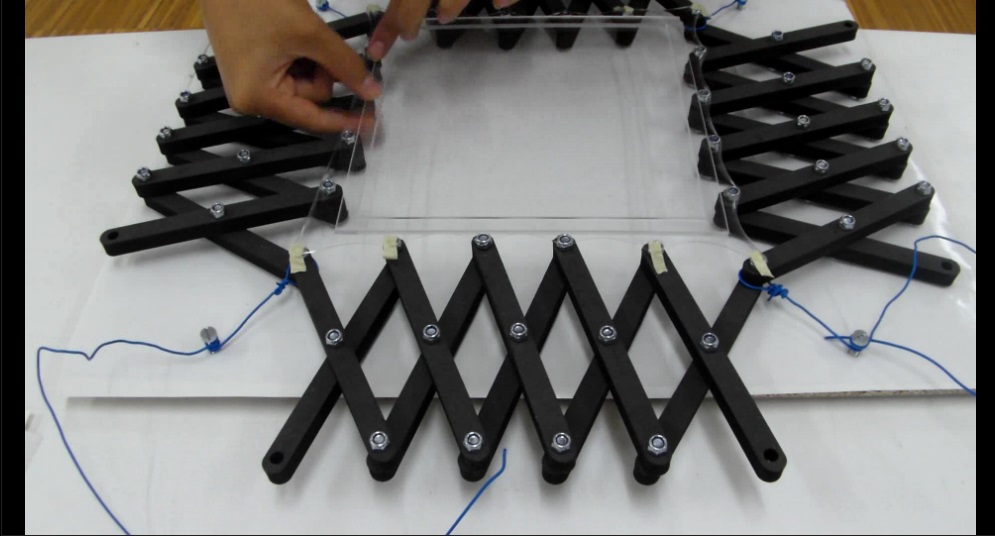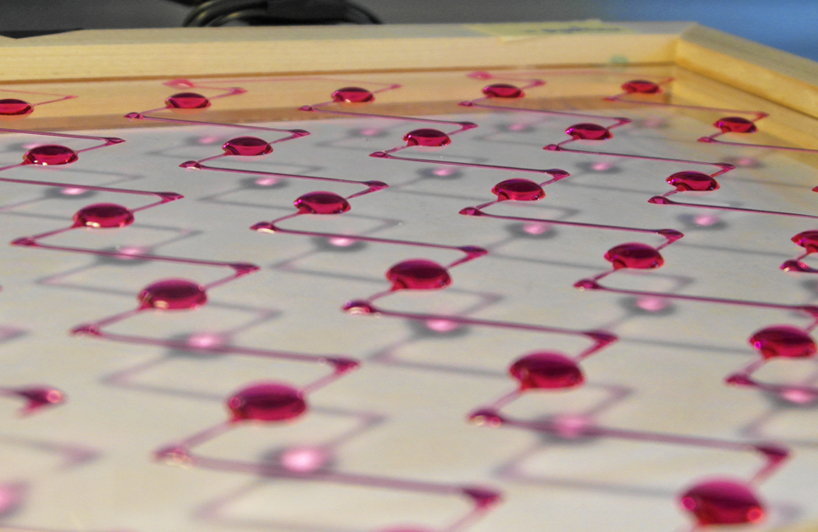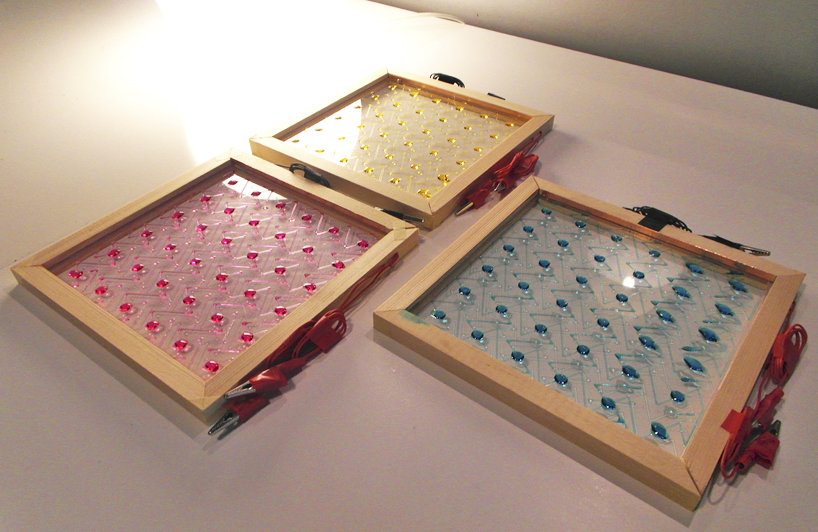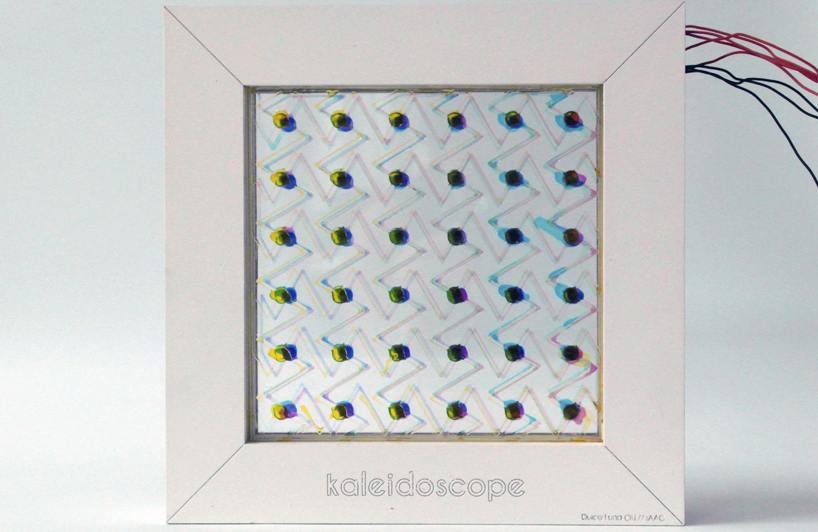Kaleidoscope is a research project that was realized as part of the Open Thesis Fabrication 2013.
It was an intense 4 months research and testing procedures in order to get a working prototype with digital fabrication and material experimentation. The research was focused on creating a new type of adaptive window where the intelligence is embedded directly into the object, rather than being an attachment to the system.
kaleidoscope_Open Thesis Fabrication// IAAC from Dulce Luna on Vimeo.
The system is derived from mimicking the behavior of Cephalopods, a class of marine animals commonly referred to as “inkfish”, whose skin possesses one of the most incredible camouflage reactions that exist in nature. Cephalopods can change their colours and patterns in milliseconds, whether for signalling (both within the species and for warning) or active camouflage, as their chromatophores are expanded or contracted.
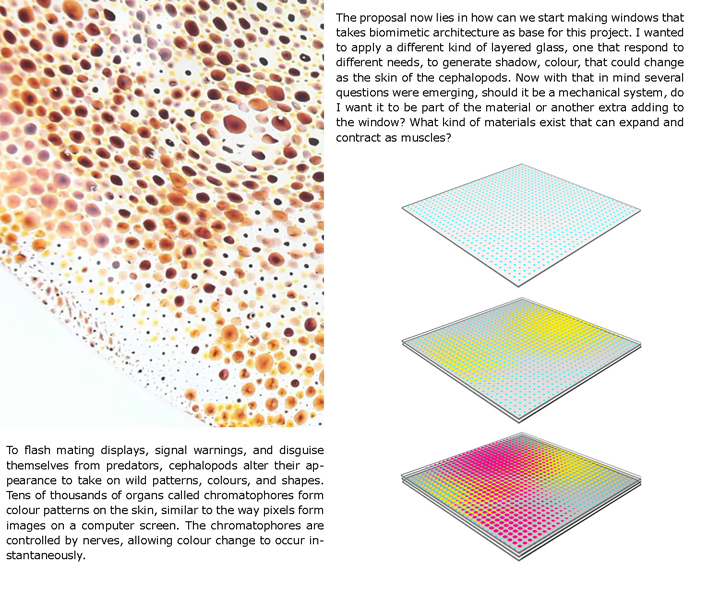 The research now derived in what kind of materials can I use in order to get that effect? I found thanks to collaborative network research as “materiability” the information needed in order to develop the idea of electroactive polymers as a muscle cell.
The research now derived in what kind of materials can I use in order to get that effect? I found thanks to collaborative network research as “materiability” the information needed in order to develop the idea of electroactive polymers as a muscle cell.
The procedure was adapted in order to develop a material that could react to an electrical field to change size, colour and opacity.
The connections, the size and the separation of each dot were empirically developed and iterated various times when changing the size of the prototypes.
Scissors system in order to expand the polymer in the acrylic frames before applying the conductive material.
The patterns were applied with a 3D printing machine from Luis Fraguada, then we took some testing to see how much air pressure, velocity, thickness of the conductive material we needed to be able to print the pattern in each frame.
Very much alike the skin of the octopus, Kaleidoscope consists of various layers of coloured dots which can change their size in response to an electrical impulse to generate shadow or create differently coloured atmospheres.
The final prototype was a three layered polymer based frame with a double-sided coloured gel.
While the project was very successful considering the short time span, it would be interesting to continue the research in a bigger scale in order to improve the application of the patterns and to see what other use scenarios could be developed
Kaleidoscope
IAAC, Institute for Advanced Architecture of Catalonia (www.iaac.net)
Faculty: Areti Markopoulou, Silvia Brandi, Marc Viader, Luis Fraguada, Victor Arribas, Guillem Caprodom.

